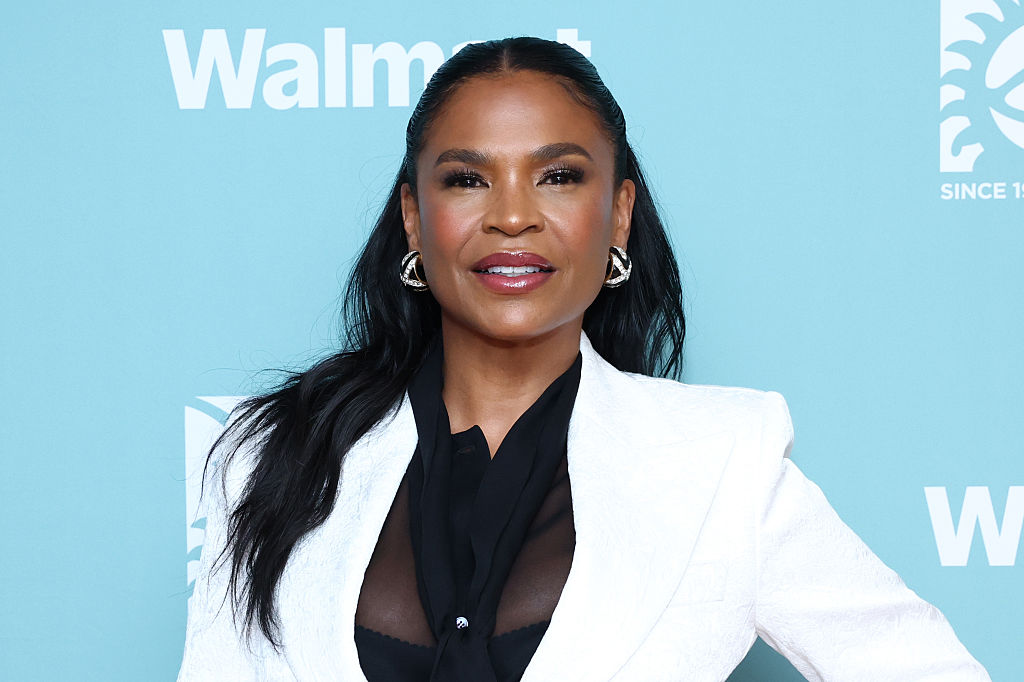Entrepreneurs Whose Business is Black History - Page 2
Share the post
Share this link via
Or copy link
Jacqueline Galloway-Blake
By Makula Dunbar
Every February communities around the country — and some parts of the world — take time out to celebrate Black History Month. For some, the month is of great importance and instead of a recognition period, Black History Month is the moment when everyone else shows their appreciation. For Jacqueline Galloway-Blake, Founder of Brown Sugar & Spice Books; Leon Morton, creator of Black History Arcade and Khalid El-Hakim, Founder of the Black History 101 Mobile Museum — Black History is something they’re about all year-round.
For more than 20 years, the Black History 101 Mobile Museum and education consulting retail company Brown Sugar & Spice Books have been incorporating Black History into their day-to-day businesses. However, it was just over a year ago that programmer Leon Morton launched his Black History themed app.
Black History Arcade
“Black History Arcade was made to promote Black history and culture through games, trivia and entertainment applications,” said Morton. “I released it on Facebook in September of 2010. The App itself consists of eight applications.”
As a college student who attended school with his mother, Morton’s interest in Black history grew as his mom shared information from the several Black history courses she was enrolled in.
“She took a lot of Black History courses and we attended a lot of Black history events and seminars together,” Morton said. In 2004, he put his computer engineering degree to use designing puzzles that showcased African art.
“I’ve been developing games and websites for years. I kind of look at it like an artist who paints Black history or a rapper who makes music about Black history,” Morton added. “My thing is on the programming side. This is my medium. This is my way of showing Black history.”
Through Black History Arcade, players can take quizzes and participate in brick breaker, puzzle, matching and memory games that highlight Black history figures, events, African symbols, countries and flags.
“There’s the shared Black history quiz and the I Have a Dream Puzzle. It’s a traditional 4X4 puzzle that actually plays the “I Have a Dream” speech as you’re solving it. There’s a word search, the Discovering Africa Brick Breaker game, Egyptian Hieroglyphics Match, African Flags and Mbira Says, said Morton.
A traditional African instrument, the Mbira is used to mimic the light and sound of the Simon Says memory game.
“It’s a living application, so I’ll add more interesting software. I’m also exploring mobile applications so that it can be downloaded on whatever device you’re using. It’s going to continue to grow with games and entertainment software,” he said. “My goal is for Black history to not just be a month thing, a Kwanzaa period thing or a Juneteenth thing. I want to enable people to have information and explore Black history all year-round.”
Brown Sugar & Spice Books
Like Morton, it was Galloway-Blake’s parents that encouraged her to pursue starting a Black history influenced business.
As a young girl, Galloway-Blake’s mother shared stories about growing up on a rural farm in Virginia and attending a segregated elementary and high school.
“She talked about how they walked to school for three miles and the school bus would pass her by. She told me how she went to college, felt ill-prepared and had struggles,” said Galloway-Blake. “My father was a World War II veteran. I heard stories of him fighting at the Battle of the Bulge in an army of segregated soldiers. Looking back I can see how the stories my parents told me have played a role in our people’s history.”
As a woman, Galloway-Blake’s family stories stuck with her. In 1990 she gave up her full-time job as a teacher to begin operations at Brown Sugar & Spice Books. A one-stop online destination for African-American books, educational resources and services, Galloway-Blake’s business still provides her the opportunity to implement teaching.
“We’re trying to provide services and products to make the teaching of Black history easy. Most of the teachers in America are Caucasian females so we want to make it easy for them to find Black history resources. Many teachers will not travel into the inner city in the heart of Harlem or Detroit — where BSSB is based — so we make it easy to order from the catalogue online.”
In addition to online services, Galloway-Blake — sometimes with a team — travels around the country when requested to spearhead Black history assemblies, workshops and professional development for teachers.
“We inform them how to teach black history, work with black students and incorporate Black history into their curriculum,” she said. “We’ll come to schools and communities to run our Black history summer reading program. We also have a radio show called “Save Our Black Boys.” We try to touch all bases with the students, teachers and parents.”
Galloway-Blake believes that the best Black history experience is the one parents can give to their children by reading with them and making an effort to keep books in the home portraying characters that mirror African-American children.
“Brown Sugar & Spice was started because we noticed a huge lack of availability of African American books to children, schools and educators back in the late 80s. Now there’s a plethora of books written about Black children and families, written and illustrated by Black people,” Galloway-Blake says.
“There are many bookstores, but our company has a niche; it’s true stories or “could be true” stories about people of color. We’re very particular of the story lines and illustrations. We want quality artwork that realistically depicts people. Also we want to be a realistic as possible with the accuracy of the text.”
Through her years of traveling and distributing Black history books and resources, Galloway-Blake has seen Black History Month’s significance lessen in schools. From recognizing the entire month, it’s gone to just a cultural week in some places. Even with her business, Galloway-Blake has witnessed the publication of Black History books fizzle.
A year of so after many African American themed books are published they go out of print because schools and parents are not buying them.
“If we don’t know our history, what’s the motivation for teachers to want to teach it?” asks Galloway-Blake. “If you see a school that’s not making an effort, offer to help them. We want to make the consciousness of literacy and teaching Black history in the home a priority.”
Black History 101 Mobile Museum
Like Galloway, El-Hakim’s business calls for constant travel — largely due to the fact that his business is inside of a trailer. After realizing that he had a knack for collecting Black history artifacts in 1991, El-Hakim decided six years later that he would officially take his collection on the road. He uses the items to educate and garner more interest in Black history.
“The moment when I knew I wanted to seriously pursue the museum came after experiencing the very first public response in Detroit after an exhibit,” said El-Hakim. “The way people responded let me know that it was a very valuable teaching tool I was offering to the community. People loved what they saw and started to call on me for all types of events.”
Since 1994, up until last August, El-Hakim taught History in Detroit Public Schools. Now all of his time is dedicated to organizing tours and exhibits. NECESSARY! (Malcolm X), The 3 M’s (Martin, Motown and Michael) and Drum Majors for Justice are a few exhibits that the museum has showcased. The current show, Drum Majors for Justice is also the title of El-Hakim’s recently published book — a collection of quotes from African American political leaders.
Walking into El-Hakim’s museum one can expect to see items that portray everything correlating with the Black experience from slavery to hip-hip.
“There are a few controversial artifacts that people always point out such as an original KKK hood from the 1920’s and the original lynching photograph from Marion, Indiana that inspired Billie Holiday’s Strange Fruit,” El-Hakim added. “There are documents and photos signed by people such as Malcolm X, Rosa Parks, Mary McLeod Bethune, Paul Robeson, Michael Jackson and Carter G. Woodson.”
Once a used trailer, the Black History 101 Mobile Museum was gutted out and redesigned by a group of architecture students from the University of Detroit Mercy. Outside of the trailer is a city inspired mural painted by Detroit graffiti artist Sintex.
“My interest in Black History stems from being inspired by conscious hip-hop in the 80’s. Public Enemy, KRS One, X-Clan, Melle Mel, and others celebrated being Black and being responsible to the Black community,” El-Hakim said.
Professor Griff of Public Enemy has been a longtime guest speaker at the museum, supporting El-Hakim’s mission for the past seven years.
“I only consider myself a student in this work. It keeps me humble knowing that there is always something new to learn about Black history. No one knows it all, so all I try to do is share the parts of Black history that have inspired and motivated me to have a deeper respect for our contributions. My life’s work is to share this history 365 days a year so it never ends.”
-

Vontélle Eyewear Founders Score History-Making Licensing Deal With Paramount
-

She Tried It: Ivy Park Drip 2 and 2.2 Black Pack
-

She Tried It: Inahsi Naturals Aloe Hibiscus Leave-In Conditioner & Detangler
-

'Can't Walk While Black' — Pregnant Woman Ticketed For Walking On ‘Wrong Side’ Of The Road — But Her White Husband Wasn’t









